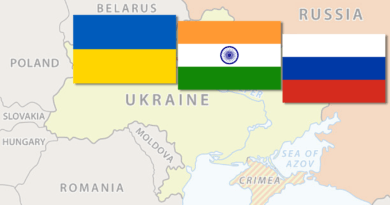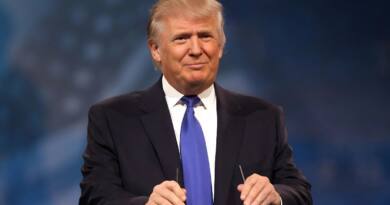H-1B Visa, Frozen Green Cards: To Be Better Or Worse?
There are a few ways that a US freeze on green card processing could affect Indians.
The Trump administration appears to have halted the processing of Green Cards submitted by certain individuals, including authorised refugees. The action is a component of the US president’s broader immigration crackdown strategy.
According to a CBS News report, immigrants who were granted asylum or refugee status have had their applications for legal permanent residency stopped. Indians may be impacted by this action in a couple of ways.
Due to per-country restrictions, Indian people are facing some of the longest green card backlogs. Further delays could result in the expiration of work permits for a number of Indian immigrants on H-1B visas who are currently awaiting their green cards. Indians may be impacted by the recent halt in a number of ways, including the possibility of losing their jobs and facing deportation.
“All of these individuals who are permitted to stay in the United States have already passed government scrutiny,” Laura Collins, director of the Bush Institute-SMU Economic Growth Initiative, told NBC News. There is no need for any more delays, she remarked.
Second, according to the Cato Institute, some employment-based candidates may potentially have to wait decades for approval. The delays might be prolonged by this pause.
Third, Indian immigrants who previously sponsored family members could now have to endure a protracted period of separation.
Finally, since the Green Card freeze will affect individuals seeking permanent status, Indians will be impacted. As of 2023, there were over 2.9 million immigrants in the United States, and Indians are anticipated to be the main group that may experience legal issues.
Significantly, compared to other years, over 51,000 Indian people applied for asylum in the US in 2023. It was the most asylum requests within the time period that were documented. According to a Johns Hopkins University study, the number of Indians applying for asylum in the US rose from 9,000 in 2018 to 51,000 in 2023—a 466% increase in just five years.
The lottery results for the US H-1B visa are out! In 2026, what’s new?
The results of the H-1B visa lottery for the fiscal year 2026 are now being made public by the United States Citizenship and Immigration Services (USCIS). Significant changes are being implemented this year, such as adjustments to the lottery selection procedure and a large rise in registration fees.
MAJOR MODIFICATIONS TO THE H-1B LOTTERY SYSTEM
The FY 2026 H-1B visa lottery registration period ran from March 7 to March 24, 2025. Employers in the United States filed computerised registrations during this period for prospective workers in specialised industries like engineering, technology, and healthcare. The registration price was raised by USCIS this year from $10 to $215 per beneficiary, a startling 2050% increase. In addition to covering administrative expenses, this increase will streamline the process by lowering the quantity of pointless or duplicate applications.
Additionally, the organisation has shifted to a beneficiary-centric selection procedure. In the past, employers could file multiple registrations for the same individual, which unjustly favoured some applicants. The new method ensures that each individual is only included in the lottery once, regardless of the number of employers who submit their names. Preventing fraudulent applications and ensuring more fair opportunities for all applicants are the objectives of this change.
EFFECTS OF THE AMENDMENTS ON HOPEFULS
The switch to a beneficiary-centric lottery approach has resulted in a sharp decline in registrations. For FY 2025, USCIS received a record 758,994 registrations. However, the number dropped by nearly 38.6% this year to roughly 470,342. Even with fewer registrations, competition is still fierce, as only about 16.6% of applicants are selected in the first round.
In their USCIS online accounts, applicants who are chosen in the lottery will see their status changed to “Selected”. Employers who are chosen must submit their full H-1B petitions, along with all required paperwork and supporting documentation, by the deadline. In the event that there are other selection rounds later in the year, those who were not chosen in the first round will have to wait.
If the initial filing rate is lower than anticipated, USCIS may carry out more than one selection cycle. To prevent processing delays, chosen applicants must make sure all documentation is correctly completed.
INCREASED COSTS AND THEIR EFFECTS
USCIS has proposed increasing prices for other visa categories, despite the increased registration fee being a popular topic. Employers and applicants may face further financial hardship as a result of the proposed increase in the application fee for an H-1B petition from $460 to $780. These changes can make it more difficult for startups and small businesses to obtain skilled foreign workers, even though they are meant to cover administrative costs.
According to some immigration experts, these higher expenses can discourage companies from sponsoring H-1B employees, which could have an effect on industries like technology that depend significantly on foreign talent. Nonetheless, USCIS argues that the modifications are required to improve productivity, lower fraud, and protect the integrity of the H-1B program.
VERIFYING THE STATUS OF YOUR H-1B LOTTERY
By accessing their USCIS online accounts, applicants can verify their lottery selection status. The next step, if chosen, is to submit a complete H-1B visa petition with all necessary supporting documentation. The candidate was probably not chosen in this round if the status doesn’t change after April 1.
Employers are urged to fill out and submit necessary petitions as soon as possible because failure to do so may cost chosen applicants opportunities. Additionally, if there are still open visa slots after the initial application period, USCIS has stated that it may hold additional selection rounds.
FOR H-1B HOPEFULS, WHAT COMES NEXT?
The next task for those who are chosen is to submit a compelling petition, make sure all documentation is correct, and get ready for any future demands for more proof from USCIS. Alternative visa possibilities, such as the L-1 visa for intracompany transfers or the O-1 visa for people with exceptional abilities, can be worthwhile for those who were not chosen.
The H-1B visa is still an essential route for qualified professionals looking for work in the United States, even with the difficulties brought on by fee hikes and procedural modifications. To increase their chances of success, businesses and applicants alike must remain aware and adjust to these changing regulations as USCIS continues to improve the system.




